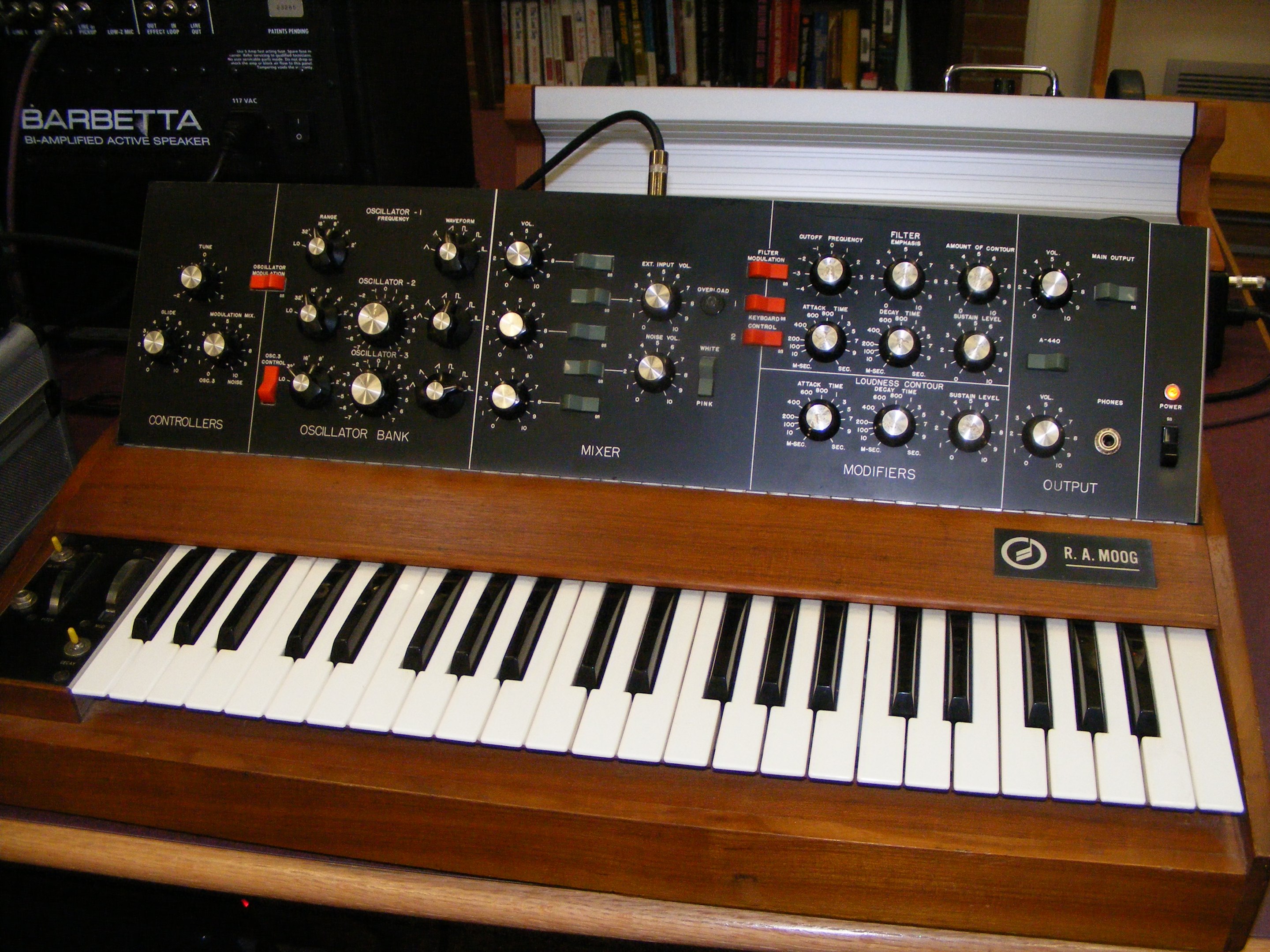|
Granular Synthesis
Granular synthesis is a sound synthesis method that operates on the microsound time scale. It is based on the same principle as sampling. However, the samples are split into small pieces of around 1 to 100 ms in duration. These small pieces are called grains. Multiple grains may be layered on top of each other, and may play at different speeds, phases, volume, and frequency, among other parameters. At low speeds of playback, the result is a kind of soundscape, often described as a cloud, that is manipulated in a manner unlike that of natural sound sampling or other synthesis techniques. At high speeds, the result is heard as a note or notes of a novel timbre. By varying the waveform, envelope, duration, spatial position, and density of the grains, many different sounds can be produced. Both have been used for musical purposes: as sound effects, raw material for further processing by other synthesis or digital signal processing effects, or as complete musical works in their ... [...More Info...] [...Related Items...] OR: [Wikipedia] [Google] [Baidu] |
Sound Synthesis
A synthesizer (also synthesiser or synth) is an electronic musical instrument that generates audio signals. Synthesizers typically create sounds by generating waveforms through methods including subtractive synthesis, additive synthesis and frequency modulation synthesis. These sounds may be altered by components such as filters, which cut or boost frequencies; envelopes, which control articulation, or how notes begin and end; and low-frequency oscillators, which modulate parameters such as pitch, volume, or filter characteristics affecting timbre. Synthesizers are typically played with keyboards or controlled by sequencers, software or other instruments, and may be synchronized to other equipment via MIDI. Synthesizer-like instruments emerged in the United States in the mid-20th century with instruments such as the RCA Mark II, which was controlled with punch cards and used hundreds of vacuum tubes. The Moog synthesizer, developed by Robert Moog and first sold ... [...More Info...] [...Related Items...] OR: [Wikipedia] [Google] [Baidu] |
Sound Object
In musique concrete and electronic music theory the term sound object (originally ''l'objet sonore'') is used to refer to a primary unit of sonic material and often specifically refers to recorded sound rather than written music using manuscript or a score. It was coined by Pierre Schaeffer in his publication ''Traité des objets musicaux'' (1966). Definitions Pierre Schaeffer According to Schaeffer: This unit of sound ound-objectis the equivalent to a unit of breath or articulation, a unit of instrumental gesture. The sound object is therefore an acoustic action and intention of listening. Schaeffer believed that the sound object should be free from its sonic origin (its sound source, or source bonding) so that a listener could not identify it, what he termed as acousmatic listening. Schaeffer's four functions of the "What Can be Heard" include: 1. A sonic entity is detected by its signal being picked up by the autonomous mechanism of hearing (ouïr) 2. The signalled sonic ... [...More Info...] [...Related Items...] OR: [Wikipedia] [Google] [Baidu] |
Wavelet
A wavelet is a wave-like oscillation with an amplitude that begins at zero, increases or decreases, and then returns to zero one or more times. Wavelets are termed a "brief oscillation". A taxonomy of wavelets has been established, based on the number and direction of its pulses. Wavelets are imbued with specific properties that make them useful for signal processing. For example, a wavelet could be created to have a frequency of middle C and a short duration of roughly one tenth of a second. If this wavelet were to be convolved with a signal created from the recording of a melody, then the resulting signal would be useful for determining when the middle C note appeared in the song. Mathematically, a wavelet correlates with a signal if a portion of the signal is similar. Correlation is at the core of many practical wavelet applications. As a mathematical tool, wavelets can be used to extract information from many kinds of data, including audio signals and images. Sets of ... [...More Info...] [...Related Items...] OR: [Wikipedia] [Google] [Baidu] |
Sonal Atom
Sonal is a given Indian name originating from the Hindu religion. It is a unisex name often nicknamed as “Sona” and means "curious", "golden", or “precious” in Hindi, Marathi, and Gujarati. A similar name is Sonali. It is also a name used in Sri Lanka. People with the name "Sonal" include: *Sonal Chauhan (born 1989), Indian actress *Sonal Giani, Indian LGBTQ rightds activist *Sonal Mansingh (born 1944), Indian dancer *Sonal Shah (actress) (born 1980), Indian-American actress *Sonal Shah (economist) (born 1968), American economist *Sonal Sehgal Sonal Sehgal (born 13 July 1981) is an Indian actress who debuted on the silver screen with the critically acclaimed ''Aashayein (film)'' directed by the national award-winning director Nagesh Kukunoor where she was cast opposite John Abraham ... (born 1981), Indian actress * Sonal Vengurlekar (born 1993), Indian actress {{Given name Indian given names ... [...More Info...] [...Related Items...] OR: [Wikipedia] [Google] [Baidu] |
Quantum Acoustics
In physics, quantum acoustics is the study of sound under conditions such that quantum mechanical effects are relevant. For most applications, classical mechanics are sufficient to accurately describe the physics of sound. However very high frequency sounds, or sounds made at very low temperatures may be subject to quantum effects. Quantum acoustics can also refer to attempts within the scientific community to couple superconducting qubits to acoustic waves. One particularly successful method involves coupling a superconducting qubit with a Surface Acoustic Wave (SAW) Resonator and placing these components on different substrates to achieve a higher signal to noise ratio as well as controlling the coupling strength of the components. This allows quantum experiments to verify that the phonons within the SAW Resonator are in quantum fock states by using Quantum tomography. Similar attempts have been made by using bulk acoustic resonators. One consequence of these developments is tha ... [...More Info...] [...Related Items...] OR: [Wikipedia] [Google] [Baidu] |
Signal Processing
Signal processing is an electrical engineering subfield that focuses on analyzing, modifying and synthesizing ''signals'', such as audio signal processing, sound, image processing, images, Scalar potential, potential fields, Seismic tomography, seismic signals, Altimeter, altimetry processing, and scientific measurements. Signal processing techniques are used to optimize transmissions, Data storage, digital storage efficiency, correcting distorted signals, improve subjective video quality, and to detect or pinpoint components of interest in a measured signal. History According to Alan V. Oppenheim and Ronald W. Schafer, the principles of signal processing can be found in the classical numerical analysis techniques of the 17th century. They further state that the digital refinement of these techniques can be found in the digital control systems of the 1940s and 1950s. In 1948, Claude Shannon wrote the influential paper "A Mathematical Theory of Communication" which was publis ... [...More Info...] [...Related Items...] OR: [Wikipedia] [Google] [Baidu] |
Acoustics
Acoustics is a branch of physics that deals with the study of mechanical waves in gases, liquids, and solids including topics such as vibration, sound, ultrasound and infrasound. A scientist who works in the field of acoustics is an acoustician while someone working in the field of acoustics technology may be called an Acoustical engineering, acoustical engineer. The application of acoustics is present in almost all aspects of modern society with the most obvious being the audio and noise control industries. Hearing (sense), Hearing is one of the most crucial means of survival in the animal world and speech is one of the most distinctive characteristics of human development and culture. Accordingly, the science of acoustics spreads across many facets of human society—music, medicine, architecture, industrial production, warfare and more. Likewise, animal species such as songbirds and frogs use sound and hearing as a key element of mating rituals or for marking territories. Art, ... [...More Info...] [...Related Items...] OR: [Wikipedia] [Google] [Baidu] |
MIT Press
The MIT Press is the university press of the Massachusetts Institute of Technology (MIT), a private research university in Cambridge, Massachusetts. The MIT Press publishes a number of academic journals and has been a pioneer in the Open Access movement in academic publishing. History MIT Press traces its origins back to 1926 when MIT published a lecture series entitled ''Problems of Atomic Dynamics'' given by the visiting German physicist and later Nobel Prize winner, Max Born. In 1932, MIT's publishing operations were first formally instituted by the creation of an imprint called Technology Press. This imprint was founded by James R. Killian, Jr., at the time editor of MIT's alumni magazine and later to become MIT president. Technology Press published eight titles independently, then in 1937 entered into an arrangement with John Wiley & Sons in which Wiley took over marketing and editorial responsibilities. In 1961, the centennial of MIT's founding charter, the ... [...More Info...] [...Related Items...] OR: [Wikipedia] [Google] [Baidu] |
Rhythm
Rhythm (from Greek , ''rhythmos'', "any regular recurring motion, symmetry") generally means a " movement marked by the regulated succession of strong and weak elements, or of opposite or different conditions". This general meaning of regular recurrence or pattern in time can apply to a wide variety of cyclical natural phenomena having a periodicity or frequency of anything from microseconds to several seconds (as with the riff in a rock music song); to several minutes or hours, or, at the most extreme, even over many years. The Oxford English Dictionary defines rhythm as ''"The measured flow of words or phrases in verse, forming various patterns of sound as determined by the relation of long and short or stressed and unstressed syllables in a metrical foot or line; an instance of this"''. Rhythm is related to and distinguished from pulse, meter, and beats: In the performance arts, rhythm is the timing of events on a human scale; of musical sounds and silences that occur ... [...More Info...] [...Related Items...] OR: [Wikipedia] [Google] [Baidu] |
Infrasonic
Infrasound, sometimes referred to as low frequency sound or incorrectly subsonic (subsonic being a descriptor for "less than the speed of sound"), describes sound waves with a frequency below the lower limit of human audibility (generally 20 Hz, as defined by the ANSI/ASA S1.1-2013 standard). Hearing becomes gradually less sensitive as frequency decreases, so for humans to perceive infrasound, the sound pressure must be sufficiently high. Although the ear is the primary organ for sensing low sound, at higher intensities it is possible to feel infrasound vibrations in various parts of the body. The study of such sound waves is sometimes referred to as infrasonics, covering sounds beneath 20 Hz down to 0.1 Hz (and rarely to 0.001 Hz). People use this frequency range for monitoring earthquakes and volcanoes, charting rock and petroleum formations below the earth, and also in ballistocardiography and seismocardiography to study the mechanics of the human cardiovascul ... [...More Info...] [...Related Items...] OR: [Wikipedia] [Google] [Baidu] |
Frequency
Frequency is the number of occurrences of a repeating event per unit of time. Frequency is an important parameter used in science and engineering to specify the rate of oscillatory and vibratory phenomena, such as mechanical vibrations, audio signals (sound), radio waves, and light. The interval of time between events is called the period. It is the reciprocal of the frequency. For example, if a heart beats at a frequency of 120 times per minute (2 hertz), its period is one half of a second. Special definitions of frequency are used in certain contexts, such as the angular frequency in rotational or cyclical properties, when the rate of angular progress is measured. Spatial frequency is defined for properties that vary or cccur repeatedly in geometry or space. The unit of measurement of frequency in the International System of Units (SI) is the hertz, having the symbol Hz. Definitions and units For cyclical phenomena such as oscillations, waves, or for examp ... [...More Info...] [...Related Items...] OR: [Wikipedia] [Google] [Baidu] |





